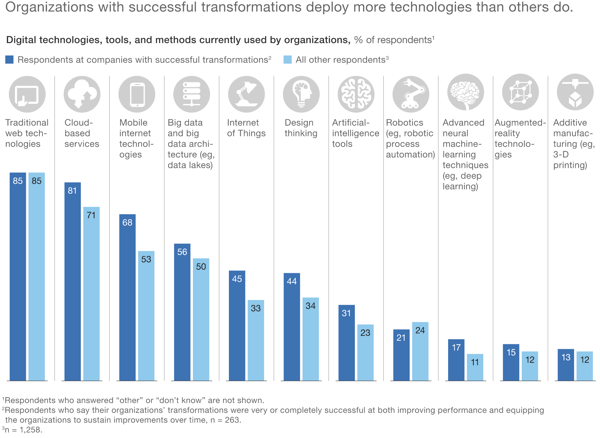Localization in the Age of Digital Transformation

“Digital transformation is the process of using digital technologies to create new — or modify existing — business processes, culture, and customer experiences to meet changing business and market requirements. This reimagining of business in the digital age is digital transformation.”
In the constantly changing, technologically-driven ecosystem that companies are finding themselves working in, it can be difficult to build a forward-thinking strategy. And it can be even harder to do so without the right tools at your disposal. Many companies these days are looking towards digital transformations to not just catch up with competitors, but instead, get ahead of them.
So what are the keys to a digital transformation, and where should you start?
Moving From Analog to Digital
Though it may feel like it was decades ago, the era of pen and paper was relatively recent - and for some industries, hasn’t completely ended. Real estate, manufacturing, and other distinctly “analog” industries are only recently catching up to the digital world. Many companies are still making the transition internally to allow for improved productivity, efficient process automation, and an increased focus on maximizing the customer experience.
However, digital transformations have proven to be a challenge. In fact, a recent McKinsey Global Survey on the topic found that even though over 80% of respondents said that their companies had looked towards a transformation, less than one-third of them found sustained success. And for enterprise companies, it appears that success is even more difficult, as their peers at startups are 2.7 times more likely to report successful digital transformations.
Using Technology to Successfully Transform
One key point that McKinsey found in their survey was that the successfully digitally transformed companies all had one thing in common: they deployed more technologies than those companies that weren’t successful. But simply using more technology isn’t always the right approach - the focus instead should be about utilizing the right tools.
Under normal circumstances, digital transformation may be well within a company’s thoughts as they look to change the way they work. But with a global pandemic changing how “normal” operates, the transition to digital has only been accelerated - and the need for multilingual customer experiences are more essential than ever.
Moving Localization Into the Future
As a result, localization is one business function that is ripe for digital transformation. According to a recent Twilio study on the impact of COVID-19 on digital engagement, 97% of executives said that COVID-19 has sped up their transformation, and nearly the same number said they’re exploring new ways to engage their customers in an online world.
And it’s necessary - non-localized content causes friction in the customer experience, which invariably has an impact on revenue. Over 80% of consumers say that they are unlikely to purchase a product that doesn’t have a localized UI. In the e-commerce world, nearly three-quarters of online checkout pages in Europe weren’t localized, putting a stop to what would likely have been many more purchases.
By nature, localization itself is transformative - it takes previously inaccessible content and brings it to a world of new users. For companies looking to kickstart a digital transformation, localization is an ideal starting point. Bringing traditionally manual processes, like content translation, into a more automated and technological world will only help to reduce costs and improve efficiency. Relying on a language services partner that can transform strategy by bringing together AI-powered technologies, highly skilled translators, and experienced program managers can help make the once-impossible task into a successful digital transformation.
 Source: McKinsey.
Source: McKinsey..png)

